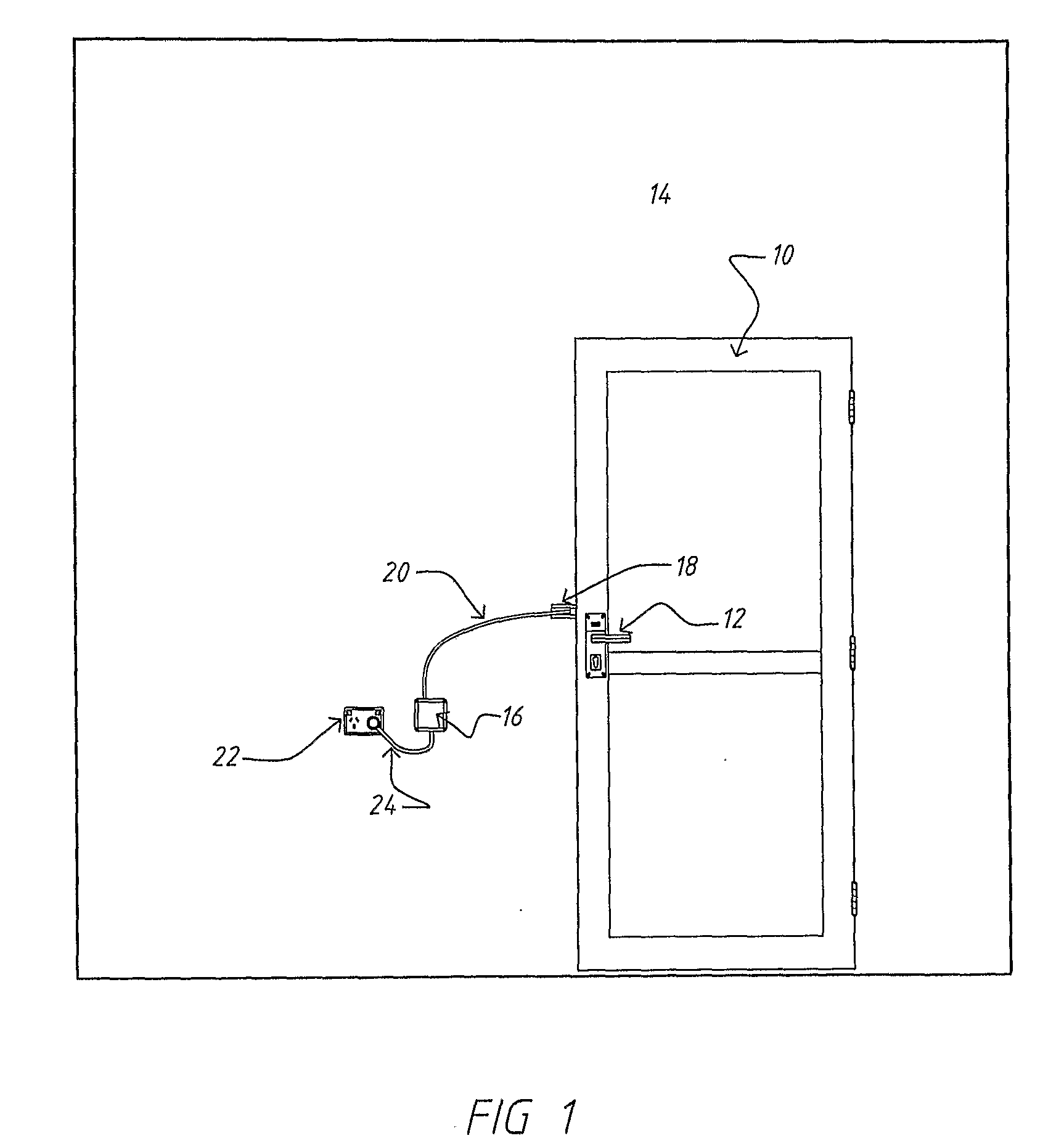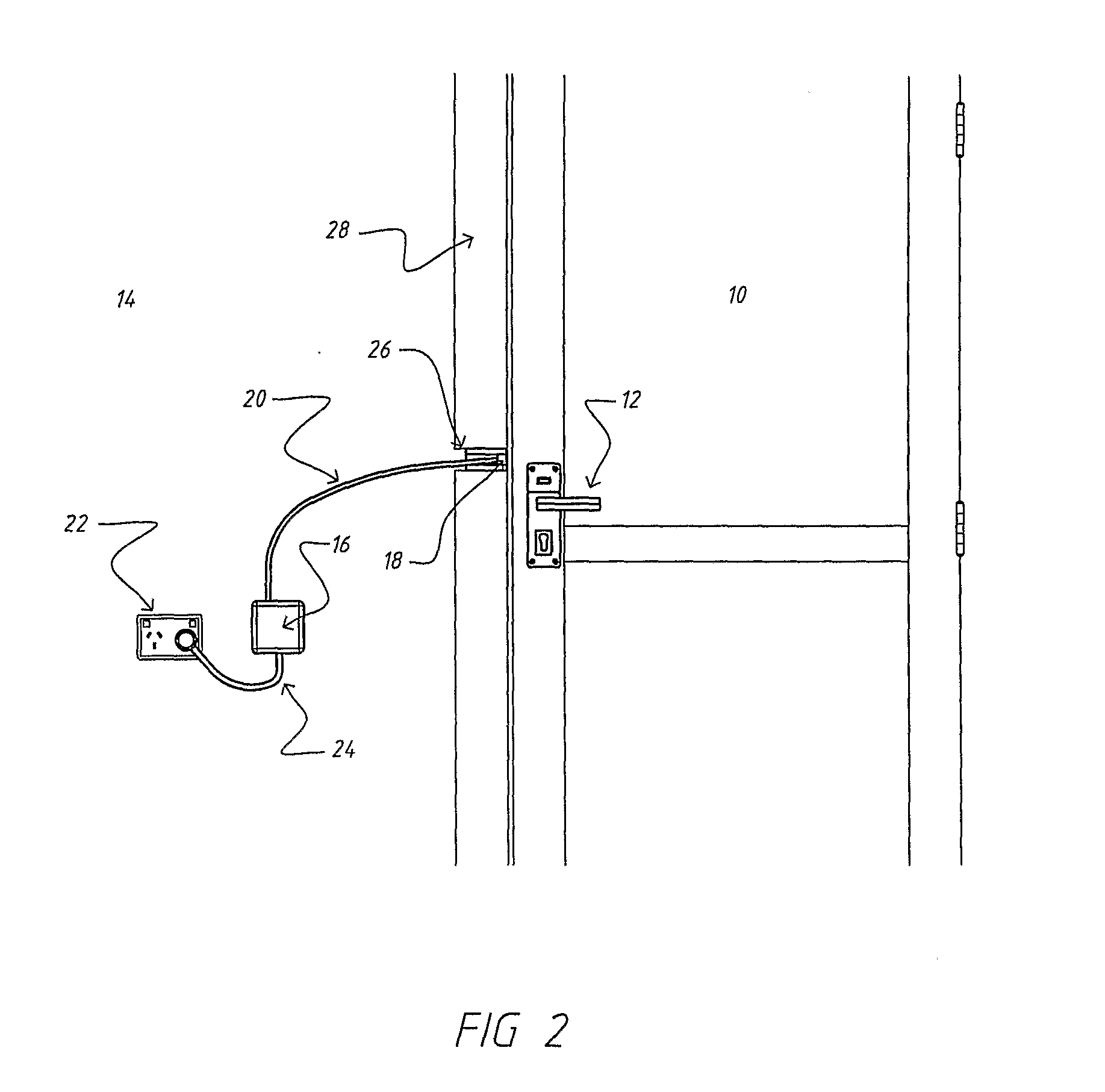Lock Arrangement and a Method of Providing Power to a Lock
a technology of locking arrangement and lock, which is applied in the direction of electric permutation locks, registers, inductances, etc., can solve the problems of lock-in, lock-out or loss of security, high cost of hinges, and limited life, and achieve the effect of optimizing magnetic coupling between them
- Summary
- Abstract
- Description
- Claims
- Application Information
AI Technical Summary
Benefits of technology
Problems solved by technology
Method used
Image
Examples
first embodiment
[0045]Turning firstly to FIG. 1, there is shown a door 10 with a lock and latch mechanism 12. The door 10 is mounted in a wall 14. Also shown is a control box 16 which is connected to a power transmitter 18 by a line 20, and to a power source, in the form of a mains socket 22, by a line 24. The control box 16 and the power transmitter 18 form part of an electrically powered lock arrangement that shall be described in more detail below. The control box 16 can alternatively be integrated into the same housing as the power transmitter 18.
[0046]FIG. 2 is an enlarged, more detailed, view of the components shown in FIG. 1 and, in particular, shows that the power transmitter 18 is positioned within a recess 26 within a door frame 28. The distal end of the power transmitter 18 is substantially flush with the edge of the door frame 28 facing the edge of the door 10 that contains the lock and latch mechanism 12.
[0047]FIG. 3 shows the previously described components in even more detail and als...
second embodiment
[0060]lock arrangement is shown in FIG. 7. This lock arrangement is similar to that previously described except the power transmitter is replaced by a first pair of electrical contacts 100 mounted adjacent the door frame and the power receiver is replaced by a second pair of electrical contact 102 mounted adjacent the door edge. The contacts 100, 102 are mounted such that one or both of them protrude into the air gap between the door frame 28 and the edge of the door 10 and make contact when the door 10 is closed. This allows power, and also control signals, to be transmitted to the door mounted components, similar to that previously described.
PUM
 Login to View More
Login to View More Abstract
Description
Claims
Application Information
 Login to View More
Login to View More - Generate Ideas
- Intellectual Property
- Life Sciences
- Materials
- Tech Scout
- Unparalleled Data Quality
- Higher Quality Content
- 60% Fewer Hallucinations
Browse by: Latest US Patents, China's latest patents, Technical Efficacy Thesaurus, Application Domain, Technology Topic, Popular Technical Reports.
© 2025 PatSnap. All rights reserved.Legal|Privacy policy|Modern Slavery Act Transparency Statement|Sitemap|About US| Contact US: help@patsnap.com



